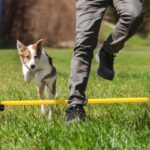A lush, green lawn is the hallmark of a beautiful home, but for pet owners, keeping that lawn healthy should never come at the expense of their furry friend’s safety. The growing awareness of how traditional lawn treatments can harm pets has led many to seek safer, more responsible alternatives. Pet safe lawn care is not just a trend—it’s a necessary shift towards healthier living for both your garden and your beloved animals.
Why Pet Safe Lawn Care Matters More Than Ever
The typical homeowner may not realize how many common lawn care products are loaded with harmful chemicals. Herbicides, pesticides, and synthetic fertilizers can linger in grass and soil long after application, posing serious health risks to pets. From skin irritations to digestive issues and even long-term toxicity, the potential dangers are significant.
Pets, especially dogs and cats, are naturally curious. They roll in the grass, dig in the dirt, and often chew on plants or lick their paws after running through the yard. This behavior increases the chance of exposure to harmful substances that can affect their well-being. For households with pets, transitioning to pet safe lawn care isn’t optional—it’s essential.
Understanding What Makes Lawn Care Unsafe for Pets
Traditional lawn care relies heavily on chemical solutions to eliminate weeds, promote grass growth, and control pests. These substances might be effective, but their safety is questionable when animals are involved. Many of these chemicals contain compounds that are known to be carcinogenic or otherwise toxic to animals.
One common example is the use of 2,4-D, a herbicide found in many weed killers, which has been linked to cancer in dogs. Similarly, fertilizers high in nitrogen or phosphorus can cause severe reactions if ingested. Even so-called “organic” treatments must be scrutinized, as some natural ingredients can still be harmful to pets.
The Foundations of Pet Safe Lawn Care
Pet safe lawn care begins with an understanding that healthy soil is the cornerstone of a resilient, thriving lawn. Instead of relying on synthetic fertilizers, enriching your soil with compost or organic matter encourages natural microbial activity, which supports plant health from the roots up. Healthy soil leads to stronger grass that’s more resistant to weeds and pests—without the need for harsh chemicals.
Choosing grass varieties suited to your local climate also reduces maintenance needs. A strong, regionally appropriate lawn requires less watering, fewer treatments, and can naturally fend off many common problems. It’s a small but vital step toward creating a safer environment for your pets.
Natural Alternatives That Promote Pet Health
There are plenty of natural lawn care options that are effective and safe for pets. Corn gluten meal, for example, is a natural pre-emergent that helps control weeds without introducing toxins into your lawn. Neem oil is another pet-friendly product that serves as a powerful insect repellent, deterring pests without harming animals.
To manage lawn nutrition, look for organic fertilizers made from bone meal, fish emulsion, or seaweed extracts. These provide essential nutrients for your grass while being non-toxic and safe for all the creatures that roam your backyard.
Maintaining a regular mowing and watering schedule also plays a significant role in pet safe lawn care. Keeping your grass at a moderate height reduces weed growth and helps prevent fungal issues, minimizing the need for any type of treatment.
Creating a Pet-Friendly Lawn Without Compromise
Pet safe lawn care doesn’t mean sacrificing the appearance or quality of your yard. In fact, many pet-friendly lawn practices are better for the environment and result in a more robust and attractive landscape. Mulching with organic materials not only enriches the soil but also creates a soft, comfortable surface for pets to play on.
Additionally, it’s wise to consider creating designated pet zones. Areas where dogs can dig or relieve themselves, layered with mulch or gravel, can minimize damage to the main lawn and make clean-up easier. These zones can be both functional and visually pleasing with a little creative landscaping.
When treating the lawn, always observe safe re-entry times, even if you’re using pet-safe products. Though these products are non-toxic, giving them time to settle ensures that your lawn remains a secure place for pets to roam freely.
Professional Help for Pet Safe Lawn Care
For pet owners who feel overwhelmed by managing lawn care themselves, many landscaping companies now offer pet safe lawn care services. These professionals understand which products and methods are suitable for homes with animals and can design a lawn care regimen tailored to your specific needs.
Before hiring any service, make sure to ask detailed questions about the products they use. Transparency is key, and a trustworthy provider will be happy to share information about ingredients and safety protocols.
The Long-Term Benefits of a Pet Safe Approach
Committing to pet safe lawn care offers more than just peace of mind—it brings real, lasting advantages. Not only does it protect your pets from harmful exposure, but it also fosters a more sustainable approach to yard maintenance. Over time, the soil becomes richer, the grass becomes stronger, and your lawn becomes a welcoming, vibrant space for both humans and animals.
Furthermore, embracing a safer lawn care method contributes to the greater environmental good. Reducing chemical runoff into water systems and minimizing the use of synthetic products helps protect local ecosystems and wildlife.
Conclusion: A Healthier Lawn for a Happier Pet
Creating a safe, chemical-free outdoor space where your pets can play, relax, and explore freely is one of the most rewarding choices a pet owner can make. Pet safe lawn care is not just about avoiding harmful products; it’s about cultivating a healthy, resilient environment that supports the well-being of every living creature that calls your backyard home.
By prioritizing natural solutions, improving soil health, and being mindful of your lawn care choices, you can achieve a beautiful yard that’s both sustainable and safe. As more people become aware of the impact traditional lawn care has on their pets, the shift toward safer, greener practices continues to grow—and your lawn can be a shining example of that change.





